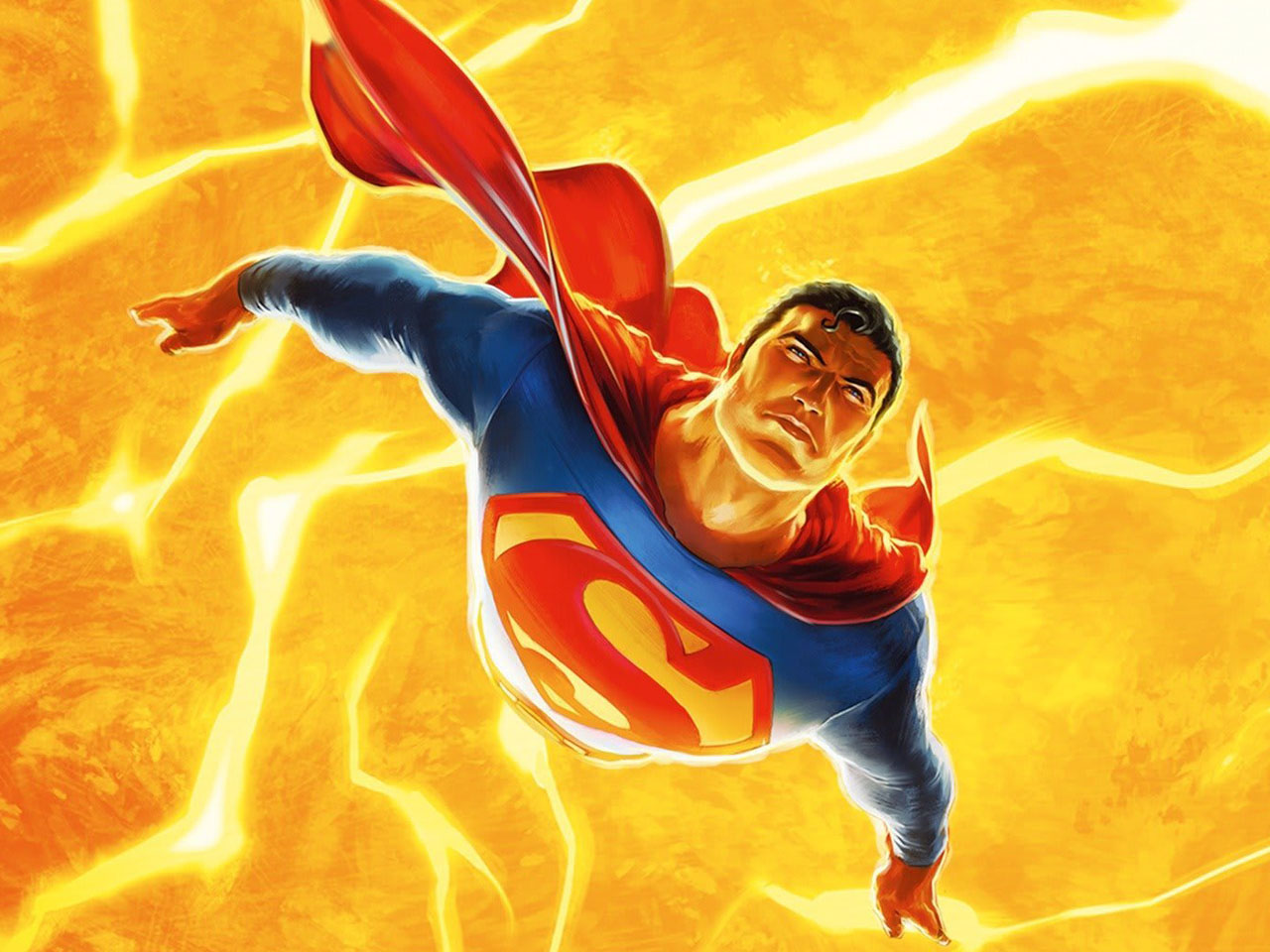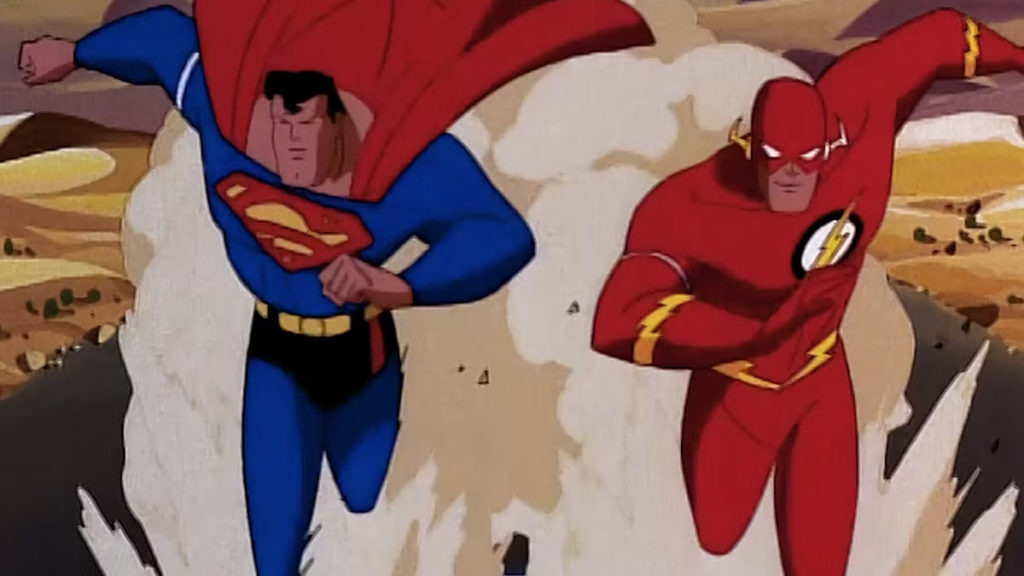
Superman powers have been flying across pop culture for nearly a century, but not all of them are consistent. The version you meet in comics might bend reality with a sneeze, while the movie version usually sticks to flight and laser eyes. Both are valid, both are entertaining, and both remind us that Superman is less about limits and more about possibilities. Here is the complete breakdown of every Superman power and how it differs between the comics and the movies.
Strength
Comics: Superman’s strength is virtually limitless. He has bench pressed the weight of the Earth for five days, moved planets with chains, and wrestled gods. Writers often use his strength as shorthand for scale. If something looks impossible, Superman can probably lift it.
Movies: Cinematic Superman is still impressive but usually scaled back. Lifting cars, stopping crashing planes, and moving large ships are his trademark feats. Occasionally films like Man of Steel push him closer to comic book levels, but most movies stop short of cosmic power stunts.
Flight
Comics: Originally, Superman just leapt tall buildings. By the 1940s, he gained full flight. Comics portray him moving at near-light speeds, sometimes crossing galaxies in minutes. He can hover, dart, or soar into space with ease.
Movies: From Christopher Reeve’s elegant lifts to Henry Cavill’s sonic booms, flight is a staple. Films focus on visual spectacle rather than physics, often showing Superman as a soaring symbol more than a precision machine.
Invulnerability
Comics: Bullets, bombs, and black holes rarely faze him. He has survived supernovas, walked on the sun, and resisted reality-warping attacks. The only common weaknesses are kryptonite, red sun radiation, and magic.
Movies: Films show Superman shrugging off bullets and missiles, but they usually stop short of extremes like black holes. Injuries are rare, but when they happen (such as kryptonite poisoning), they serve the plot more than continuity.
Heat Vision
Comics: Superman’s heat vision can weld steel or slice mountains. Some versions show him controlling the intensity down to surgical levels. In extreme moments, it becomes a planetary weapon.
Movies: Heat vision is cinematic shorthand for power. It melts steel, cuts through alien machinery, and delivers flashy battle sequences. The precision of the comics rarely makes it into film adaptations.
X-Ray Vision
Comics: Superman can see through most objects except lead. Writers often highlight this for detective work, medicine, or battlefield awareness.
Movies: The movies keep it simple. Superman looks through walls or searches for people in distress. Rarely do the films expand it into the advanced science tool that it is in comics.
Super Speed
Comics: Superman is often portrayed as nearly equal to the Flash. He can move so fast that time slows, letting him operate at microscopic speeds or react to cosmic threats.
Movies: Movie Superman is fast enough to dodge bullets and keep up with explosions, but he rarely rivals the Flash. Films generally downplay his speed to keep tension high.

Super Hearing
Comics: Superman can tune into sounds across the globe. He often uses it to detect cries for help or track subtle disturbances in the environment.
Movies: Hearing usually plays a secondary role, often tied to moments of personal crisis. He picks up heartbeats, cries, or explosions, but it is rarely central to the story.
Freeze Breath
Comics: Superman can generate freezing winds capable of extinguishing fires, immobilizing enemies, or altering weather systems. It is a versatile tool in his arsenal.
Movies: Freeze breath is inconsistently shown. The Christopher Reeve films used it often, while modern adaptations downplay or omit it entirely.
Other Abilities
Comics: Depending on the era, Superman has displayed microscopic vision, telescopic vision, super memory, super intellect, and even the ability to sneeze away solar systems. These powers often fade in and out with editorial direction.
Movies: Films streamline his skill set. They avoid odd or inconsistent abilities and focus on the essentials of strength, flight, durability, heat vision, and speed.
Why the Differences Matter
The comics use Superman as a canvas for imagination. Powers can scale up or down depending on the story. Movies have to ground him for audiences, focusing on powers that are visually striking and narratively manageable. Both versions highlight what really matters. Superman’s powers are extraordinary, but his restraint and compassion define him more than his feats.
FAQs
Is Superman more powerful in comics or movies?
Comics, without question. Movies scale him back for story and spectacle.
Why do Superman’s powers change?
Editorial direction and storytelling needs. Writers adjust him to fit the scale of the conflict.
What powers are unique to the comics?
Oddities like super ventriloquism, super weaving, and exaggerated time travel have appeared in comics but not in movies.
Which Superman movie shows the most powers?
The Christopher Reeve films feature the widest range, including freeze breath and super reconstruction vision.
Conclusion
Superman’s powers shift depending on the medium, but the pattern is clear. Comics push him to the edge of imagination. Movies refine him into a symbol of strength and hope. Whether he is sneezing away a galaxy or stopping a falling jet, the point remains the same. He is Superman, and the power only matters because of what he chooses to do with it.

